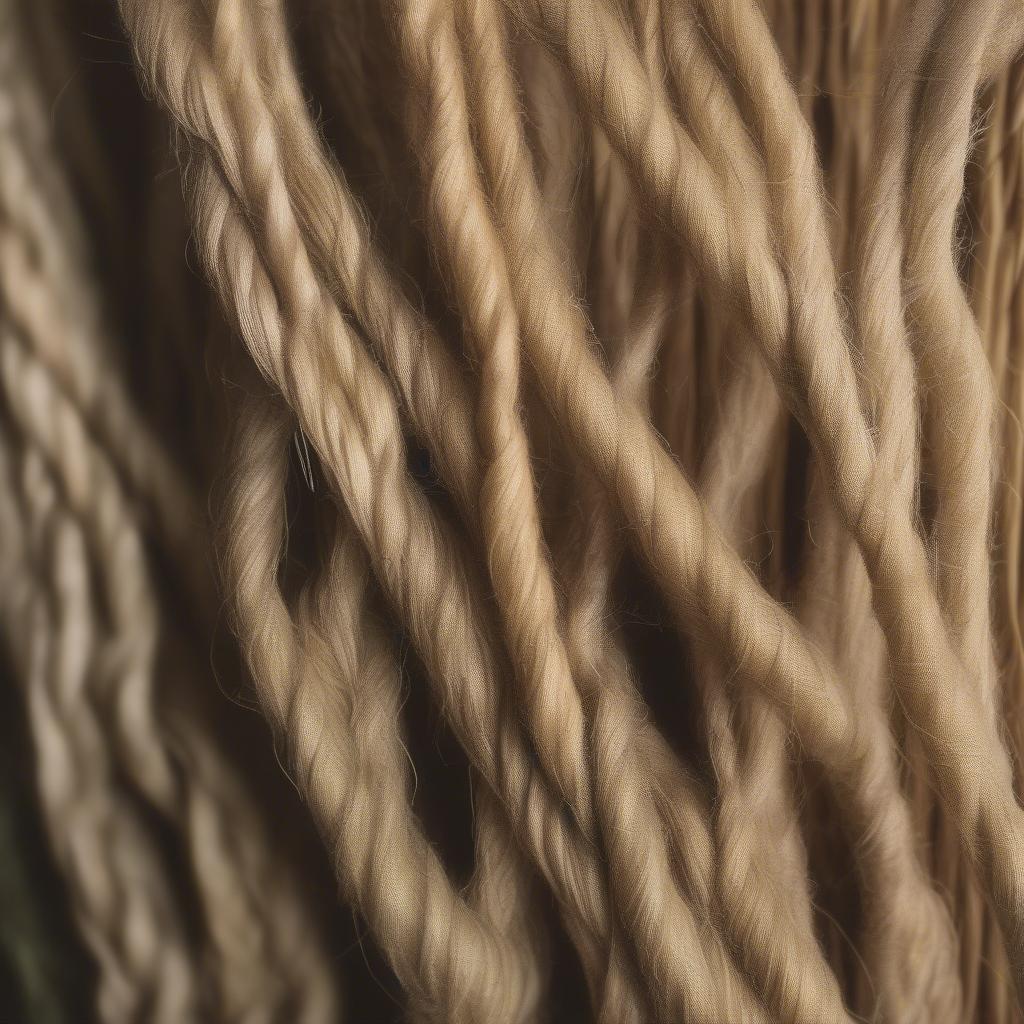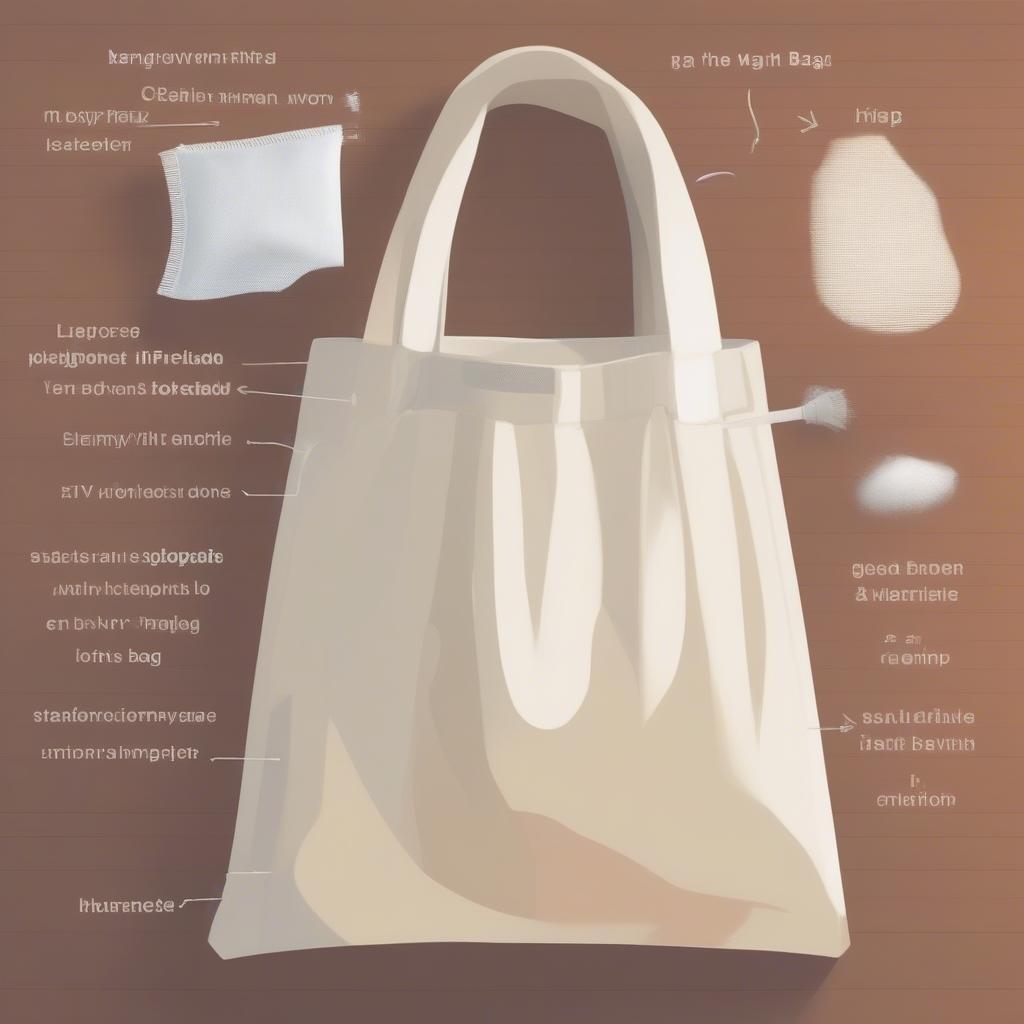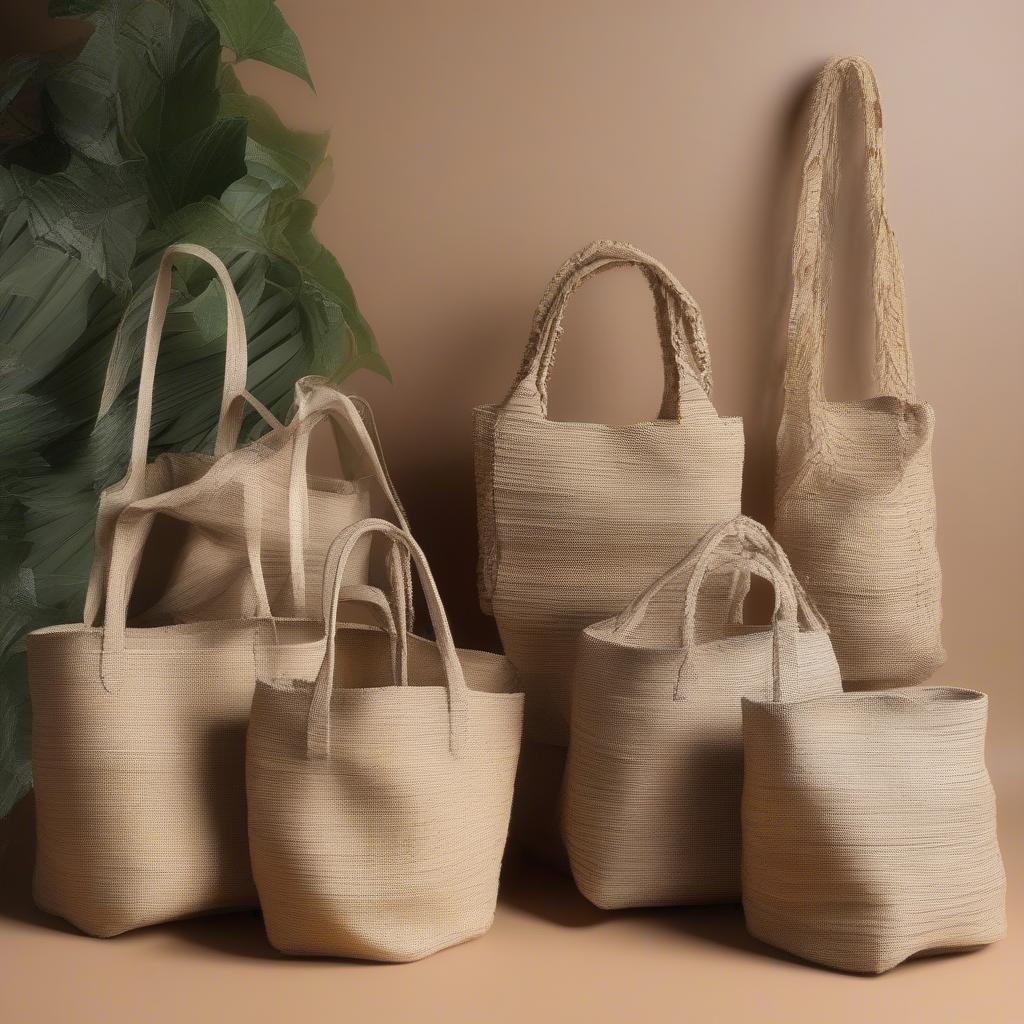Woven Bag
What Are Limp Woven Bags Made Of?
Limp woven bags, known for their casual elegance and practicality, have become increasingly popular. But What Are Limp Woven Bags Made Of? Understanding the materials used in these beautiful accessories is key to appreciating their unique qualities and making informed purchasing decisions.
Decoding the Materials of Limp Woven Bags
Limp woven bags derive their characteristic drape and softness from the materials they are crafted from. While “limp” might suggest fragility, these bags are often surprisingly durable, depending on the specific fibers used. Let’s explore some of the most common materials:
- Raffia: This natural fiber, obtained from the raffia palm tree, is known for its strength, pliability, and resistance to water. Raffia bags often have a slightly textured, organic feel.
- Jute: A strong, coarse fiber derived from the jute plant, jute bags are eco-friendly and known for their durability. They often have a more rustic appearance compared to other limp woven bags.
- Seagrass: Harvested from underwater meadows, seagrass is naturally strong and resistant to salt water. Seagrass bags have a distinctive, slightly glossy finish and a unique texture.
- Paper Straw: Made from tightly rolled and treated paper, paper straw bags offer a lightweight and affordable option. They come in various colors and patterns, making them a versatile choice.
- Cotton: This soft, natural fiber is also used in limp woven bags, providing a comfortable and breathable feel. Cotton bags are often blended with other fibers to improve durability and structure.
- Synthetic Materials: While natural fibers are common, some limp woven bags are made from synthetic materials like polypropylene or nylon. These materials offer increased durability and water resistance, though they may lack the natural appeal of plant-based fibers.
 Limp Woven Bag Materials: Raffia, Jute, and Seagrass
Limp Woven Bag Materials: Raffia, Jute, and Seagrass
Why Choose a Limp Woven Bag?
Beyond their aesthetic appeal, limp woven bags offer several practical benefits:
- Lightweight: Compared to leather or canvas bags, limp woven bags are generally lightweight, making them comfortable to carry all day.
- Packable: Their flexible nature allows them to be easily folded or rolled, making them ideal for travel.
- Breathable: Natural fibers like raffia, jute, and seagrass allow for air circulation, preventing items inside from becoming stuffy.
- Versatile: Limp woven bags can be dressed up or down, making them suitable for a range of occasions, from beach trips to city outings.
Caring for Your Limp Woven Bag
Proper care can extend the life of your limp woven bag. Here are some tips:
- Avoid Overfilling: While durable, overfilling can strain the fibers and distort the bag’s shape.
- Clean Spills Promptly: Blot spills immediately with a clean cloth to prevent staining.
- Store Carefully: When not in use, store your bag in a dust bag or on a shelf to protect it from dust and damage.
- Avoid Excessive Sunlight: Prolonged exposure to direct sunlight can fade the colors of natural fibers.
 Limp Woven Bag Care Tips
Limp Woven Bag Care Tips
Choosing the Right Limp Woven Bag for You
The ideal limp woven bag depends on your individual needs and preferences. Consider factors like:
- Material: Do you prefer the natural look and feel of raffia or jute, or the durability of synthetic materials?
- Size and Shape: Think about what you’ll be carrying in the bag and choose a size and shape that suits your needs.
- Style: From tote bags to clutches, limp woven bags come in a variety of styles. Choose one that complements your personal style.
“The beauty of a limp woven bag lies in its inherent imperfections and natural variations,” says renowned artisan, Isabella Rossi. “Each bag is unique, reflecting the character of the materials and the skill of the maker.”
Limp Woven Bags: A Sustainable Choice
Opting for a limp woven bag made from natural fibers can be a sustainable choice. These materials are often biodegradable and renewable, making them a more eco-friendly option compared to synthetic alternatives. “Choosing natural fibers supports sustainable practices and helps reduce our environmental footprint,” adds Rossi.
 Sustainable Limp Woven Bags: Raffia and Jute
Sustainable Limp Woven Bags: Raffia and Jute
In conclusion, limp woven bags offer a stylish and sustainable option for those seeking a lightweight and versatile accessory. Understanding the materials used in their creation allows for informed choices and ensures you choose a bag that meets your needs and reflects your personal style. So, the next time you admire a limp woven bag, you’ll know exactly what makes it so special.
FAQ
-
Are limp woven bags durable?
Yes, limp woven bags can be surprisingly durable, especially those made from strong natural fibers like jute or raffia. -
How do I clean a limp woven bag?
Blot spills promptly with a clean cloth and avoid submerging the bag in water. -
Can I take a limp woven bag to the beach?
Yes, many limp woven bags, particularly those made from seagrass, are resistant to salt water. -
Are limp woven bags expensive?
The price of a limp woven bag varies depending on the materials and craftsmanship. Options range from affordable to high-end. -
Where can I buy a limp woven bag?
Limp woven bags are available from a variety of retailers, both online and in brick-and-mortar stores. -
What are the different styles of limp woven bags?
Limp woven bags come in a wide range of styles, including tote bags, shoulder bags, clutches, and crossbody bags. -
What’s the difference between a limp woven bag and a structured woven bag?
Limp woven bags drape and fold easily, while structured woven bags hold their shape.
Need more help? Contact our hotline at +84 388 951 999, or visit our offices in Hanoi, Vietnam or Tech Avenue, Suite 12, San Francisco, CA 94105, USA. We have a 24/7 customer service team ready to assist you. Check out our other articles on woven bags and handcrafted accessories on our website for more information.
